Step-by-step instructions for gluing inside corners
When finishing, the main problem may be uneven walls and the resulting folds on the wallpaper. You also need to consider that with curved walls, the joints of wallpaper can diverge.
- After gluing the latter in front of the inner corner of the canvas, it is necessary to measure the remaining distance. It is measured from the edge of the glued web to an adjacent wall, 10-15 millimeters are added to the resulting figure. If the walls are very curved, then the incremental figure may be larger.
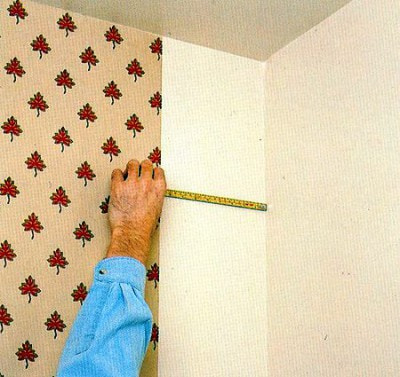
- A strip equal to the resulting figure is cut, taking into account the allowance.
- Glue processed surfaces. Depending on the type of coating, it can only be a wall or both surfaces.
- The strip is glued with its own cut side to the wall. Wallpaper should go to another plane.
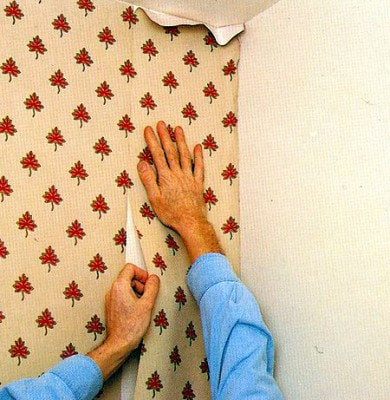
- If the glued wallpaper is wrinkled, you need to make several small cuts perpendicular to the folds.
- A level or slope on an adjacent wall draws a vertical line. The distance from the corner is equal to the width of the previous cut strip, excluding additives.
- Surfaces are smeared with glue, after which the coating is glued to the wall with an even side to the marked line. The cut side comes on an adjacent wall.
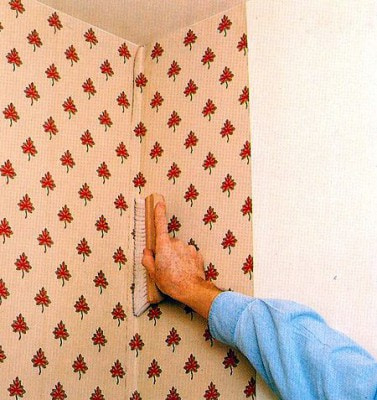
- If the coating is thick, then the wallpaper is cut off along the overlay line.
How to glue the outer corner (outer)?
The protruding corner must be glued over by analogy with the inside, however there are small differences that also need to be taken into account when working.
- The distance remaining from glued wallpaper to an adjacent wall is measured. To the resulting figure is added 20-25 millimeters.
- The segment is cut taking into account the added 20-25 millimeters.
- Before gluing, surfaces are treated with an adhesive.
- The smooth edge must be glued to the wallpaper already fixed on the wall, the personally cropped side “goes” to the adjacent plane.
- If necessary, small cuts are made in the place of the wallpaper going onto another wall, smoothed and pressed against the wall.
- A vertical strip is drawn on an adjacent wall at a distance of the just pasted cut strip plus 6-10 millimeters.
- After applying glue, the strip is applied to the wall with an even side to the marked line, going to the edge of the already glued strip.
- Joints are smeared with glue and ironed with a roller. After that, the top layer is cut along the ruler and the two layers are joined together.
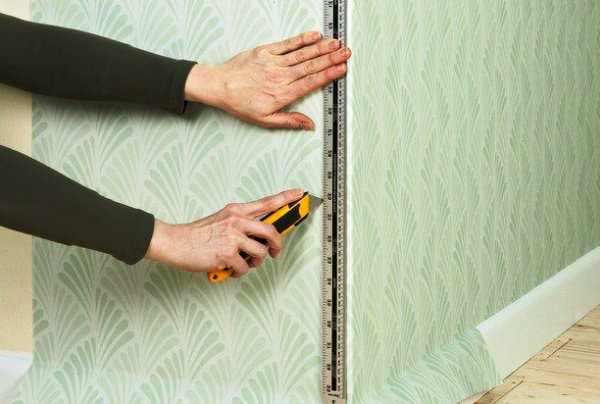
What to do if the corners are uneven?
Rugged walls are a common problem in old houses. Before you begin to glue the finish coating, it is advisable to carry out preparatory work and bring the surface “in order”. If the angles are visually smooth and do not require major repairs, it will be enough to walk with a hard cloth, removing small bumps and dust. If irregularities are noticeable to the naked eye, then it is better to do a little work before you start gluing the wallpaper.
- When carrying out finishing putty, a plastic corner is put in and fixed with a putty mixture. They can be purchased at a hardware store.
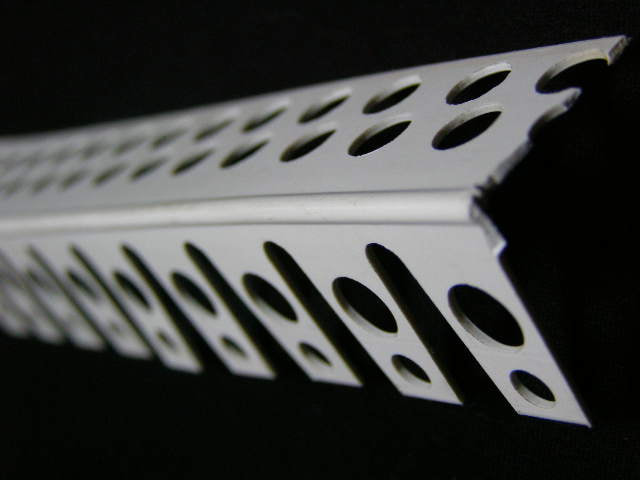
- After drying, the surface is leveled with putty or plaster.
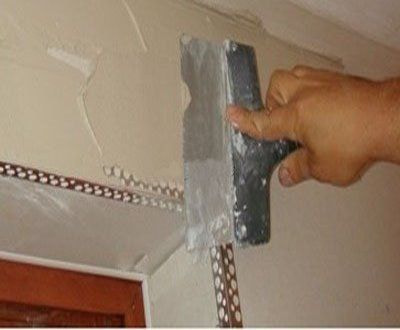
- After drying, the walls are treated with a primer.
- After the work done on the walls, you can glue the finish.
Features gluing meter-long wallpaper
Wide canvases are convenient in that they allow you to finish with fewer seams on the surface. Gluing them is more difficult, but the result is worth it.
- Most often, meter-long wallpapers are made with a non-woven backing and vinyl coating, they are much easier to glue. However, paper wide products are also found.

- When working with non-woven meter products, glue is applied only to the wall.
- For wide wallpapers, preliminary surface preparation is required.
- To paste the corners, you need to cut the canvas into parts and glue the lap. After that, the excess of the upper layer is cut off.
- After applying the strip to the wall for some time, it remains possible to align the coating by gently moving.
How to dock in the corners?
It would seem that such a trifle as gluing corners in a room can completely spoil all the work if performed incorrectly. And if the wallpaper also has a drawing that needs to be customized, then it is worth approaching the decoration responsibly.
- The strip is glued in such a way that it comes to the adjacent side. The width of the approach should not be more than 5 centimeters.
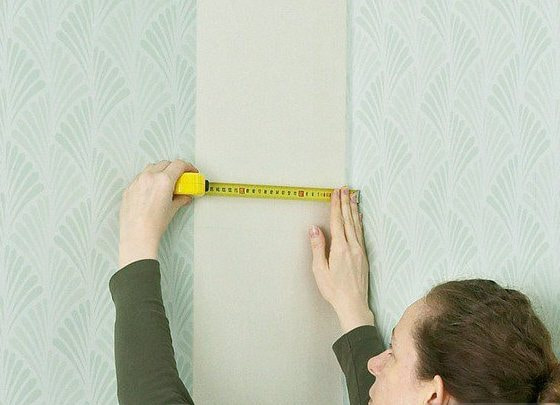
- Using a plastic spatula, the angle is leveled.

- The next segment is overlapped.
- In order to smoothly trim the excess overlays, a rule is applied to the middle of the overlap and the excess edge is cut off with a single motion with a clerical knife. In order for the cut strip to be even it is worth using the level.
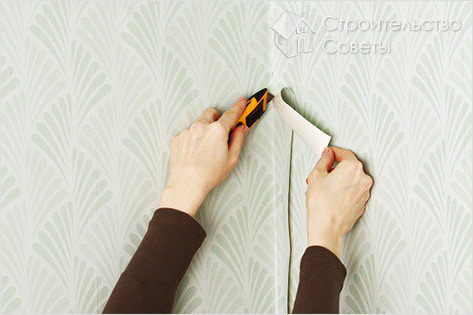
How to fit the picture in the corners?
It is important that the pattern is continuous and even around the perimeter of the room. To do this, you need to correctly combine the pattern, and trim the excess.
- Strips also glue with an overlap. An allowance is left for both walls.
- Plastic spatula wallpaper pressed against the corner.
- After gluing the second canvas, the wallpaper is trimmed according to the drawing. This method applies to fine wallpaper. A large pattern may require trimming around the edges.
Before gluing, you must first prepare the material for work by spreading the coating on the floor and examining the pattern. Segments are cut off after selecting the picture in height.
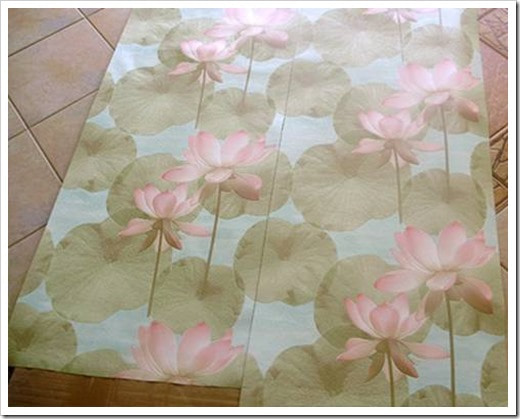
Features of clipping wallpaper in the corners
In order to get a perfectly even seam in the corner, you need to correctly trim the excess.
- After the wallpaper is glued to the wall, a straight metal ruler is applied, it can also be a spatula or a rule. To the cut line was flat, you can use the level.
- With a sharp clerical knife, excess is cut off along the edge of the ruler, after which the top layer of wallpaper will move away.
- Gently pry and get the bottom layer of wallpaper, removed in the same way.
- Cloths are smeared with glue and pressed tightly to the corner. As a result, to cover tightly against each other.
Gluing wallpaper in the corners is not so difficult, but special care and accuracy are required. Today there is a finishing method that allows you to perform work without any joints at all, namely liquid wallpaper. They are applied evenly and do not require such difficulties as fitting the picture, width, accuracy in rounded places and other nuances.

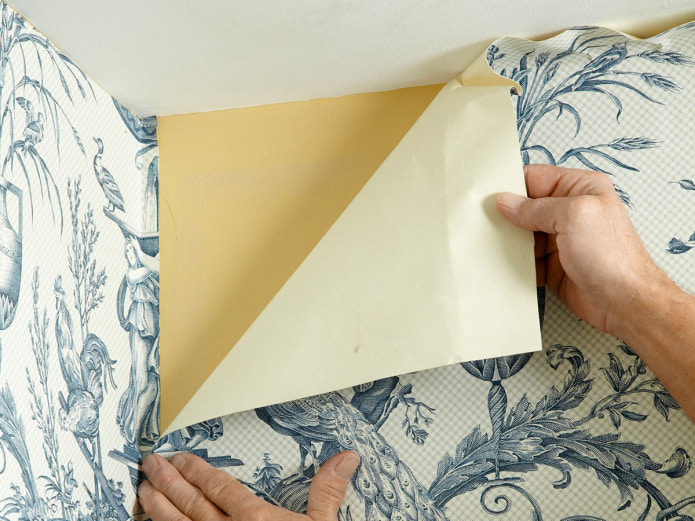
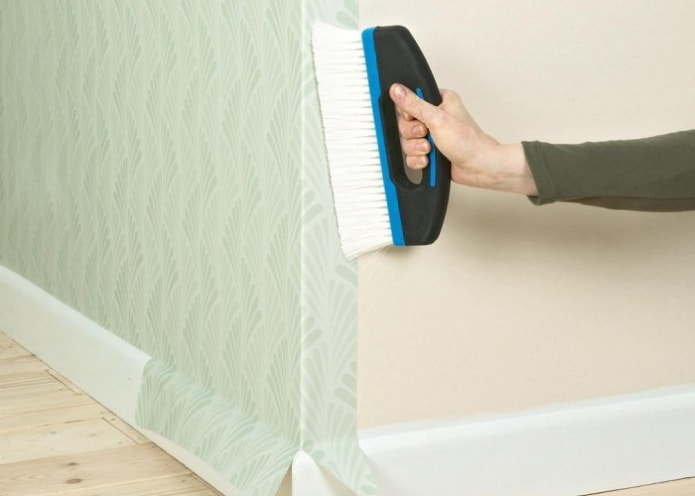
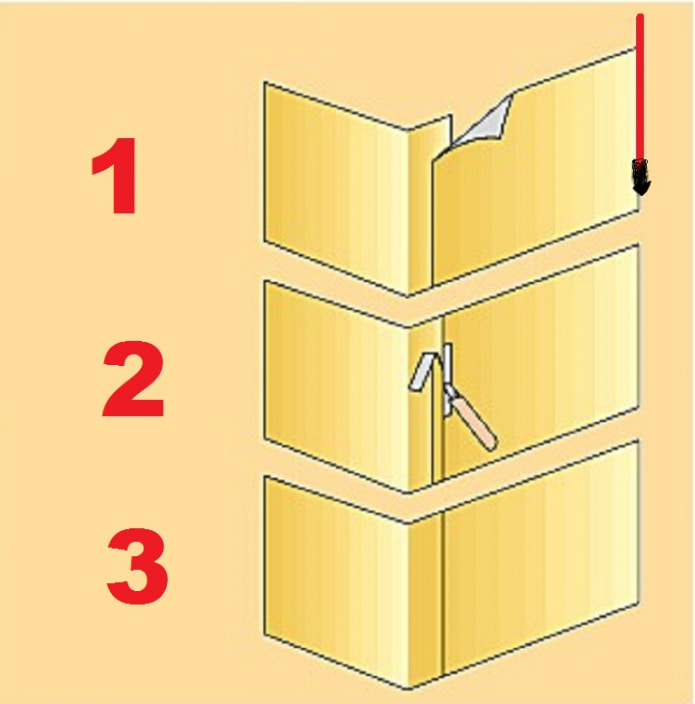
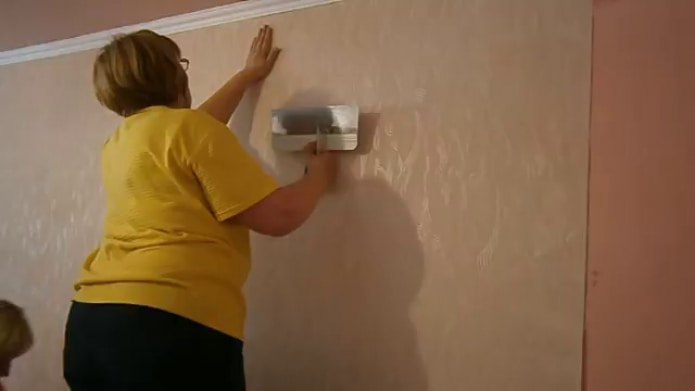
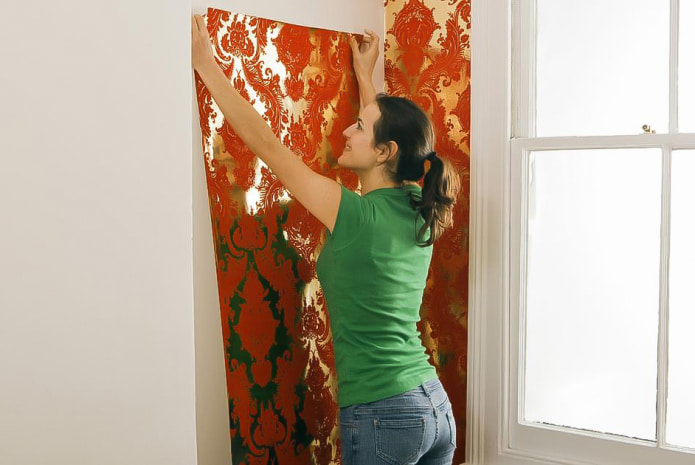
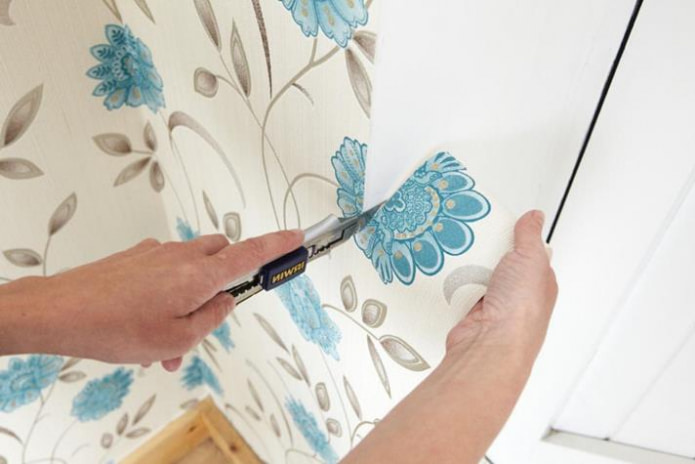

 Installation of ceiling tiles: selection of materials, preparation, procedure
Installation of ceiling tiles: selection of materials, preparation, procedure How to glue the ceiling plinth to the stretch ceiling?
How to glue the ceiling plinth to the stretch ceiling? Ceiling plinth for stretch ceiling: types, recommendations for selection
Ceiling plinth for stretch ceiling: types, recommendations for selection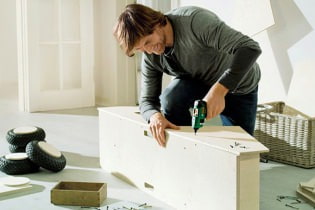 How to choose a screwdriver for home?
How to choose a screwdriver for home?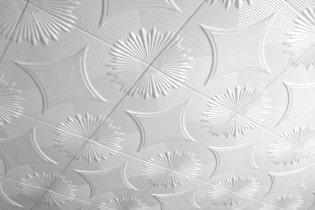 Foam tile for the ceiling: the pros and cons, the stages of gluing
Foam tile for the ceiling: the pros and cons, the stages of gluing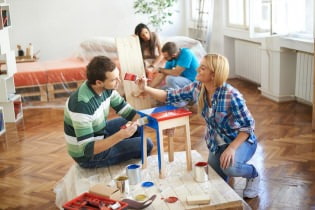 Repair in practice: how to repaint furniture yourself
Repair in practice: how to repaint furniture yourself